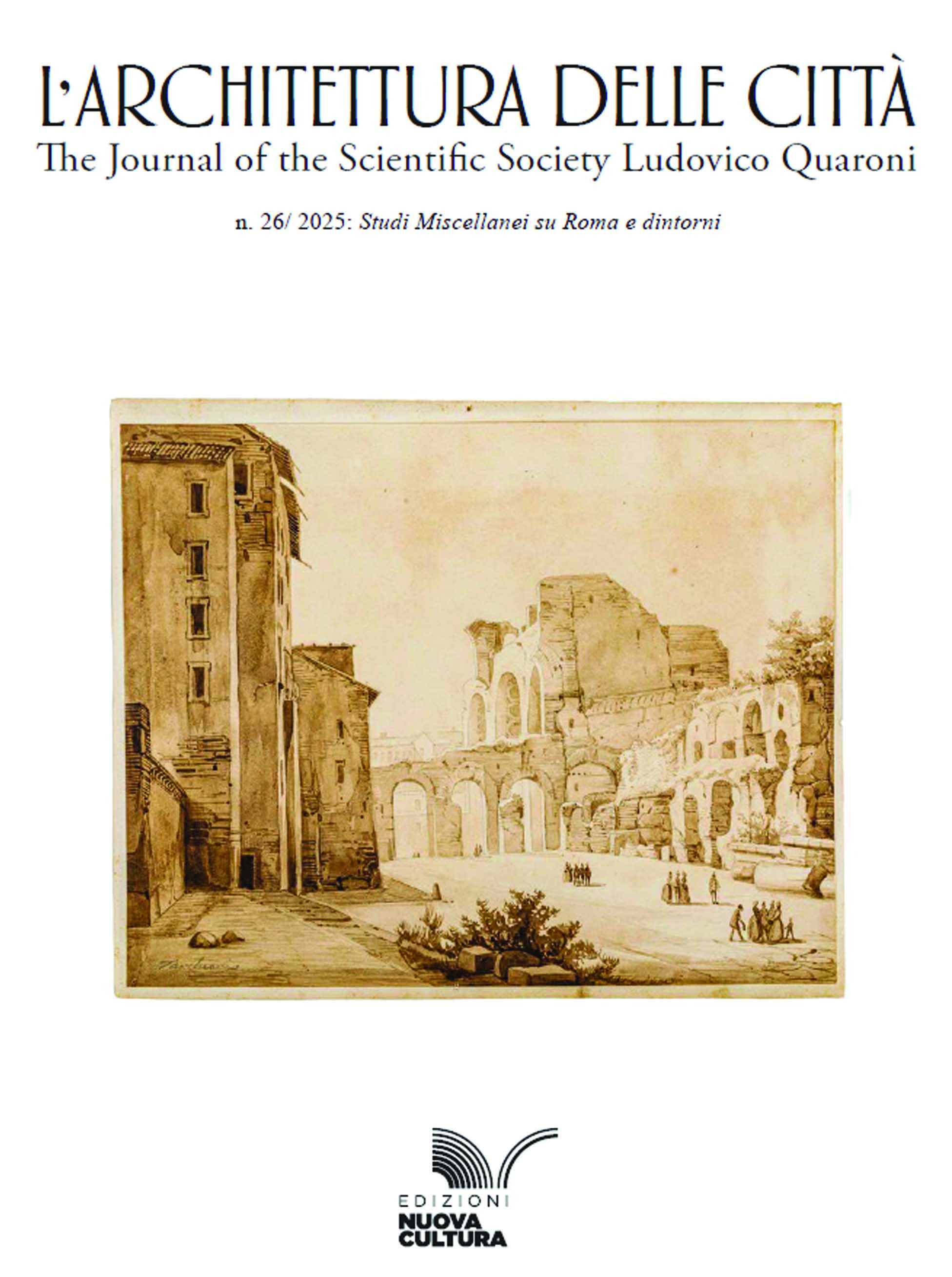Current Issue

Rome’s complex stratification continually offers surprises and prompts new reflections. This volume fully embraces that critical fascination, providing stimulating insights and even previously unexplored scientific perspectives through a miscellaneous collection of autonomous studies, all linked to a common subject examined across different historical moments.
With this spirit in mind, the editors of this collective issue—Iacopo Benincampi and Emanuele Gambuti, respectively a researcher and a research fellow working within the Project of Excellence awarded to the Department of History, Drawing and Restoration of Architecture at Sapienza University of Rome—have shaped the present volume of the series L’architettura delle Città. The Journal of the Scientific Society Ludovico Quaroni.
The volume gathers Italian and international contributions connected by a shared intention: to foster reflection on the urban landscape of Rome and, by extension, of the Italian context.
The collection stands as the outcome of a research project aimed at organizing a set of focused analyses which—supported by archival evidence and wide-ranging comparisons—allow for a broader understanding of social dynamics and contextual motivations that shaped certain architectural choices, as well as various changes made along the way.
A cura di / edited by Iacopo Benincampi, Emanuele Gambuti

